AIRSHOW LONDON 2020 - London Int. Airport / Ontario / Canada
Update: 2020/09/29 by Shawn Clish / CHK6
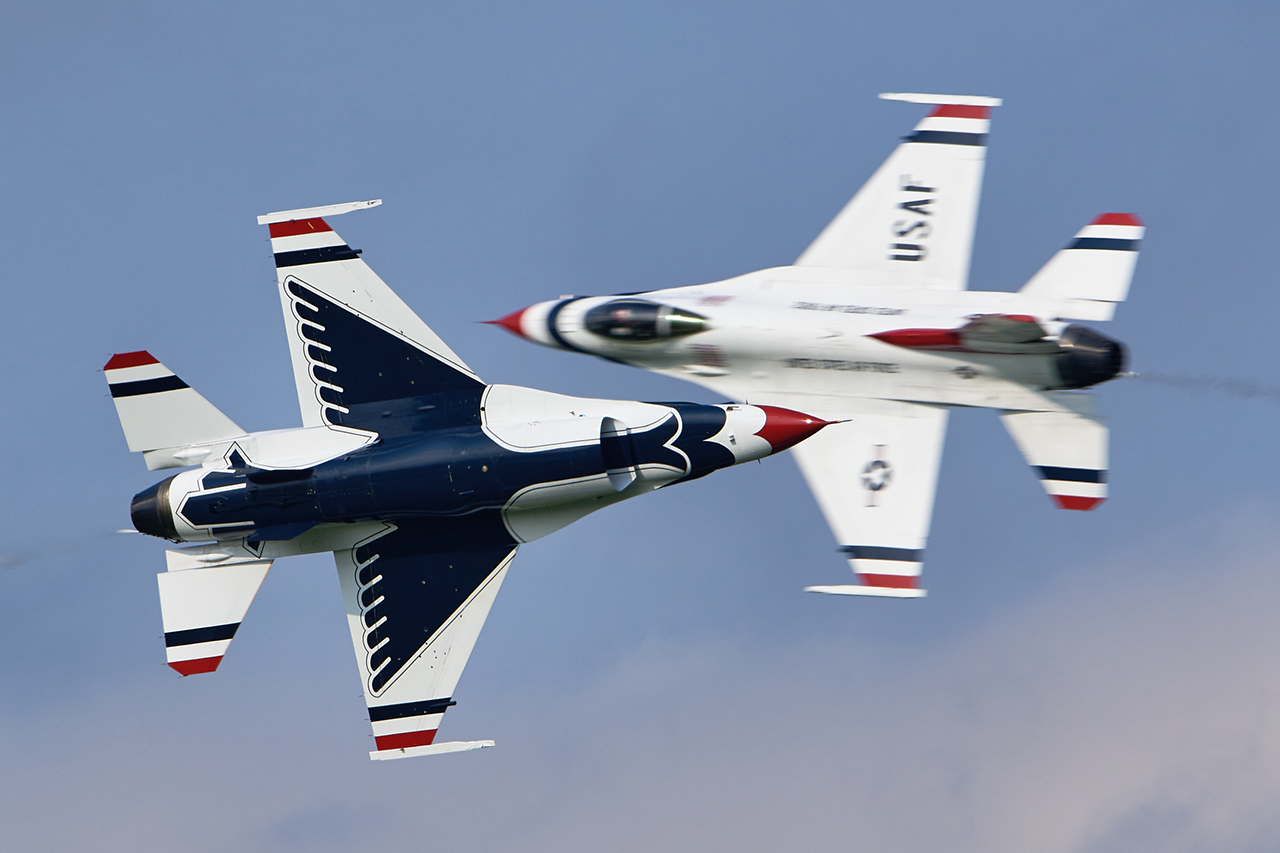
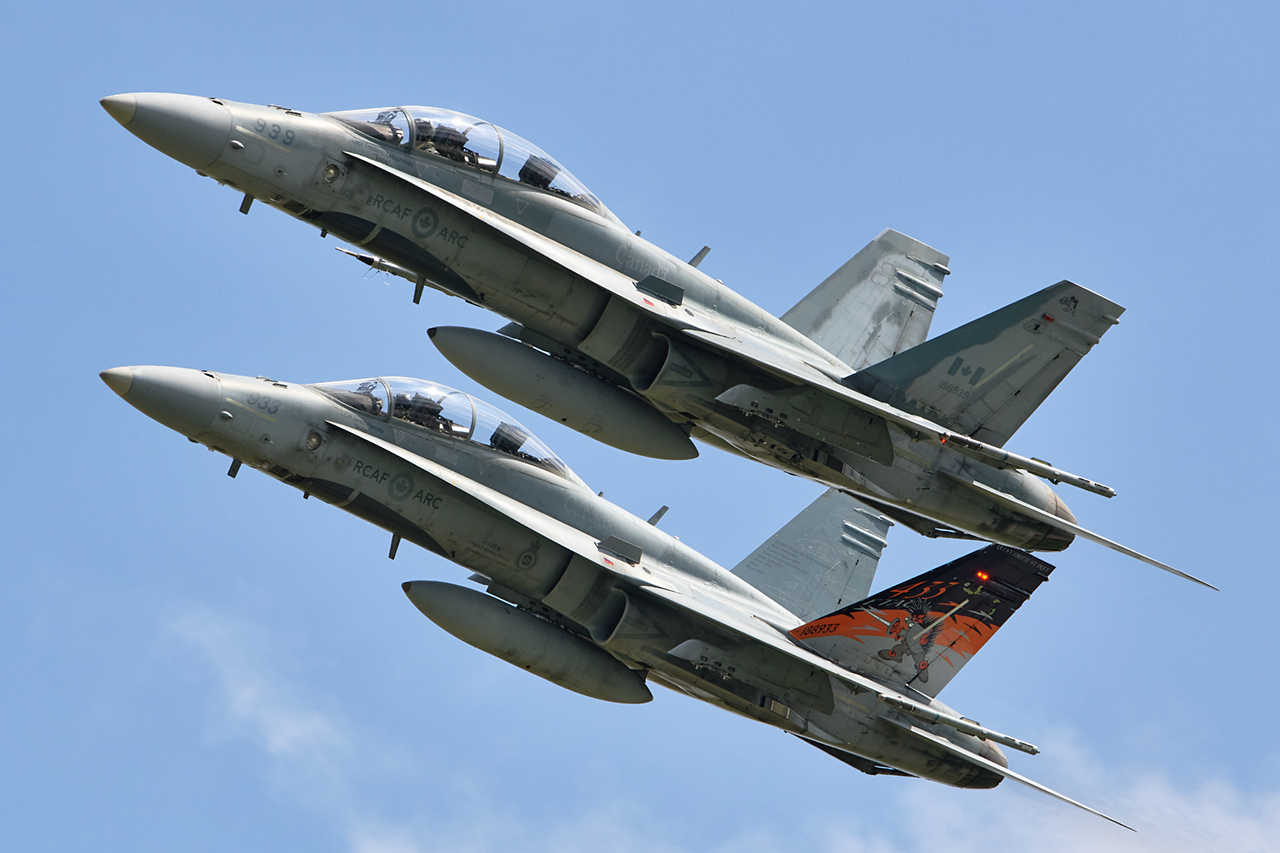
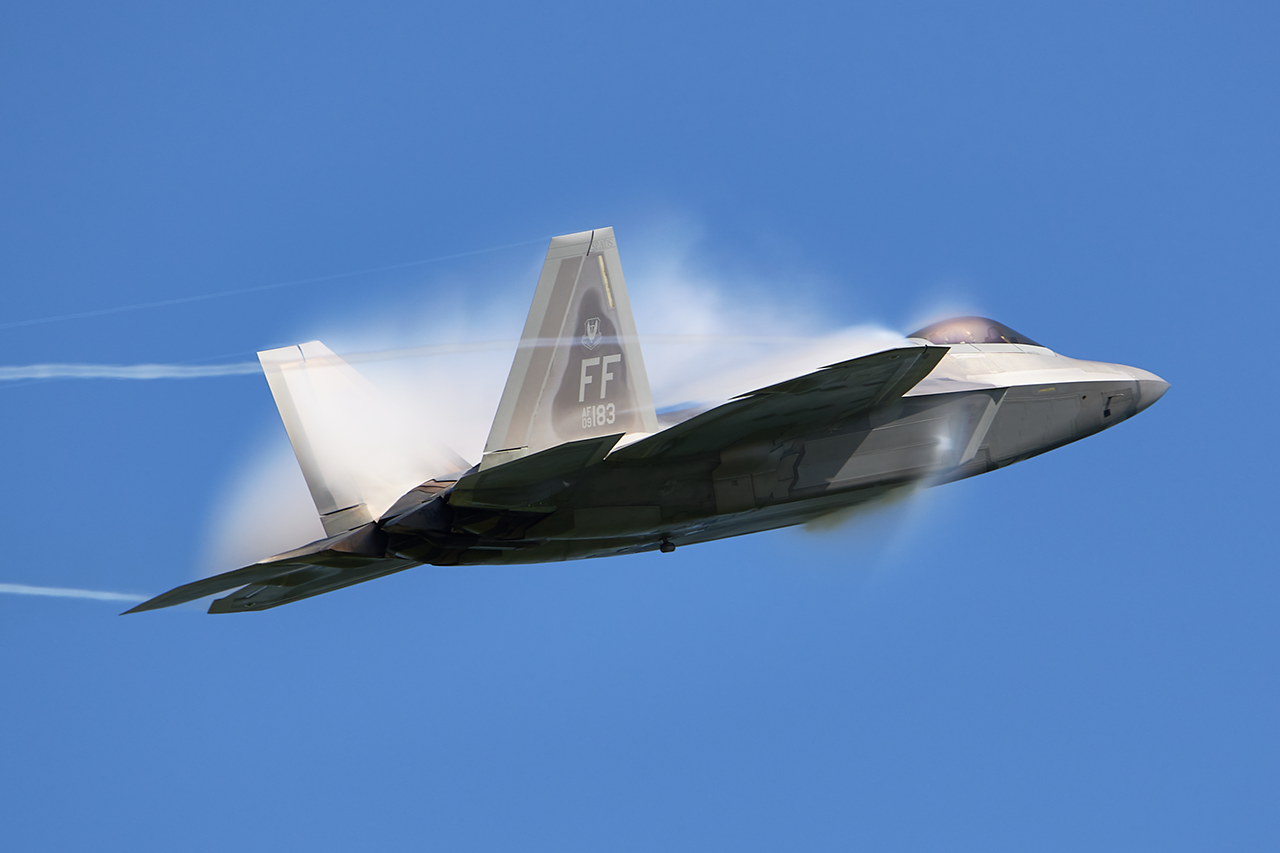
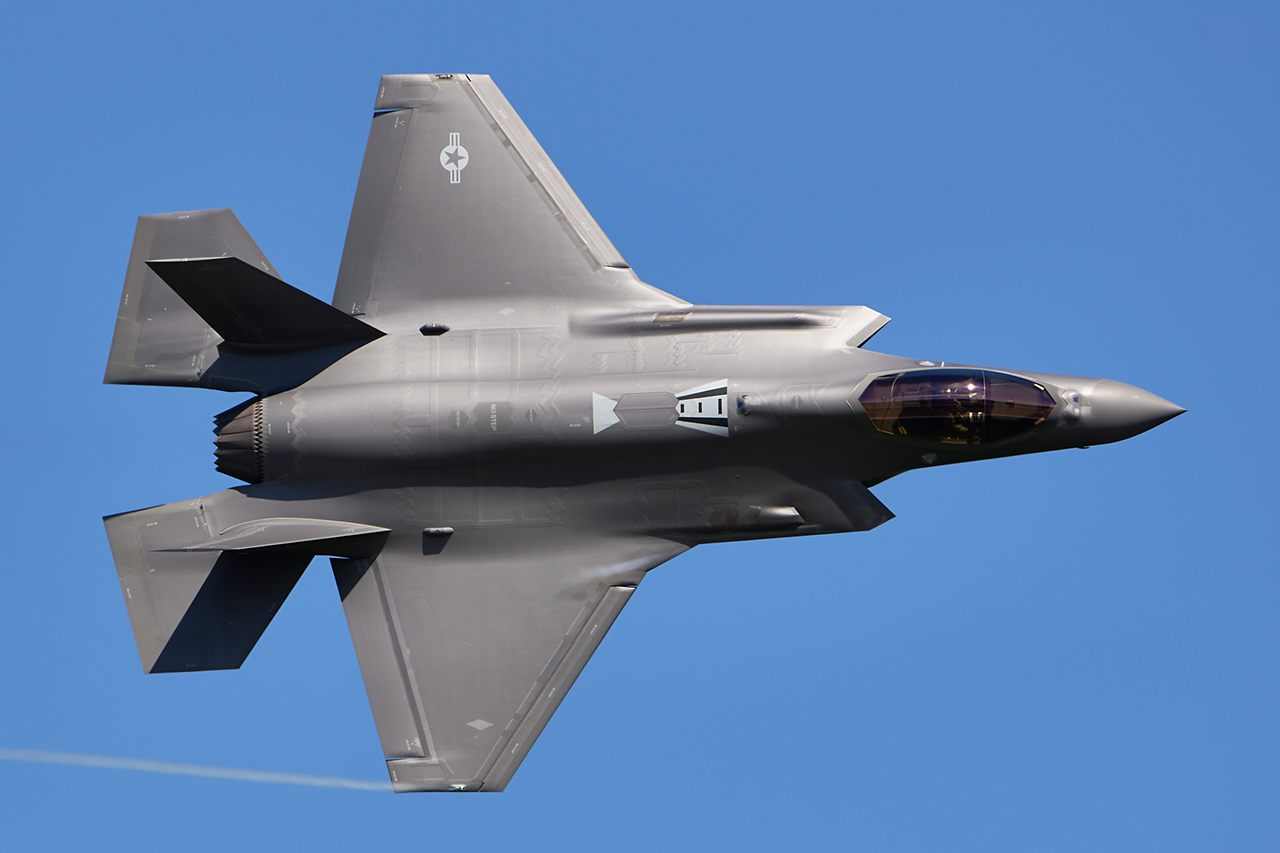
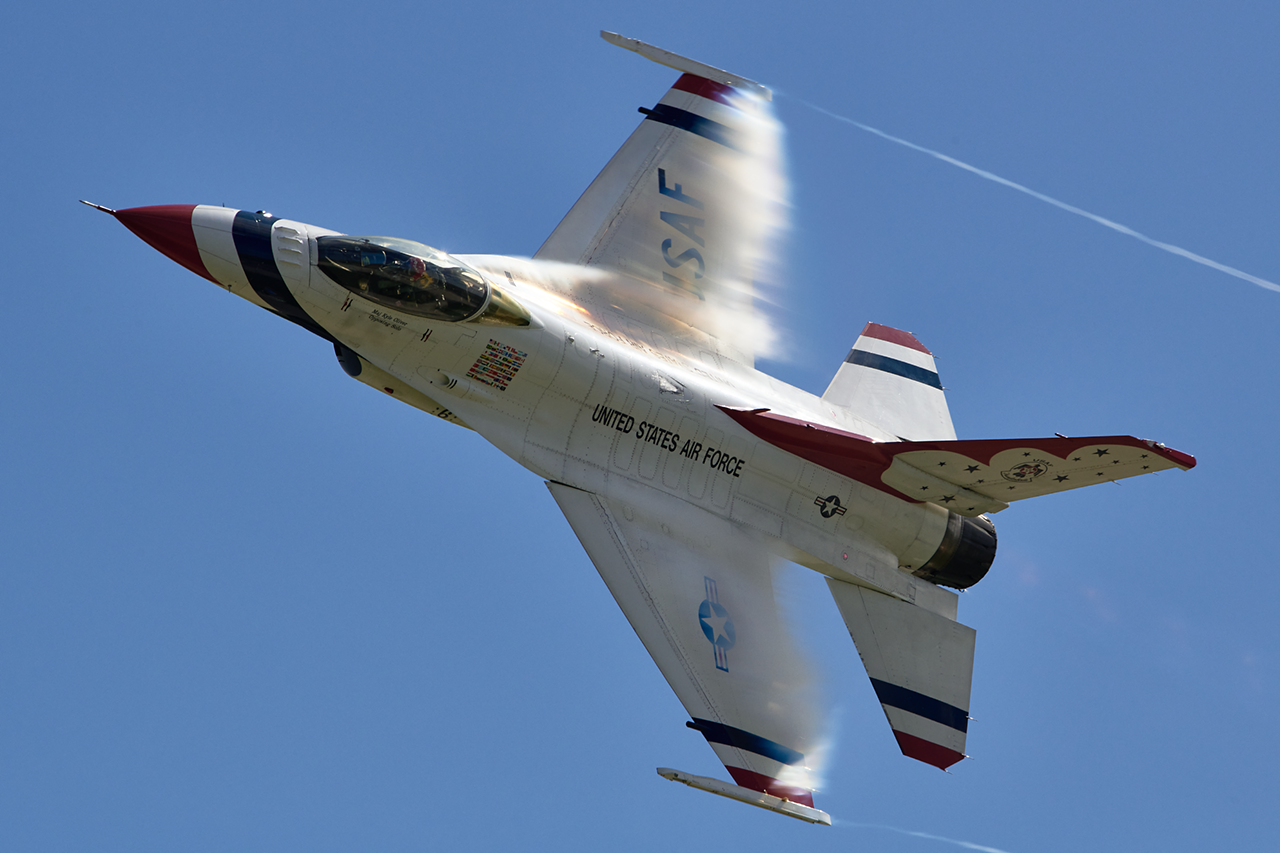
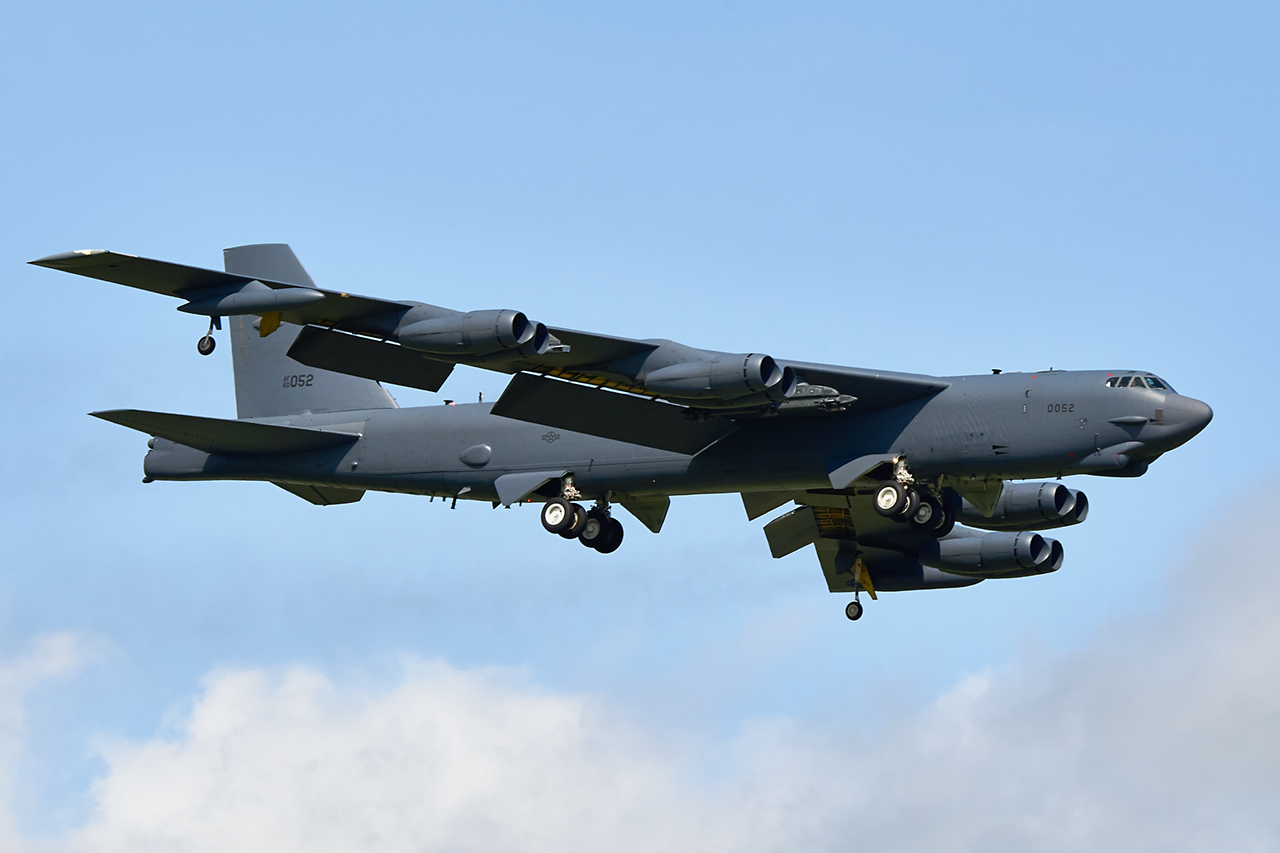
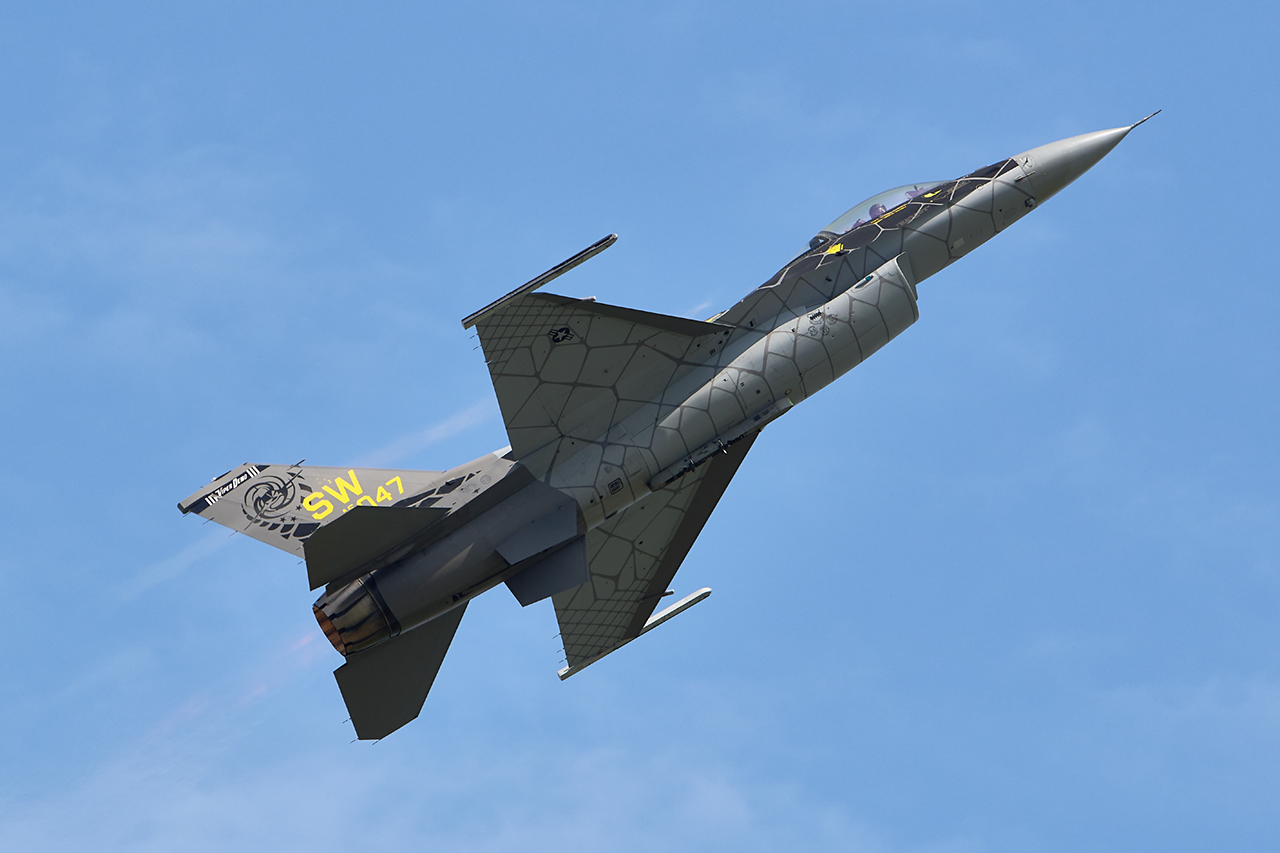
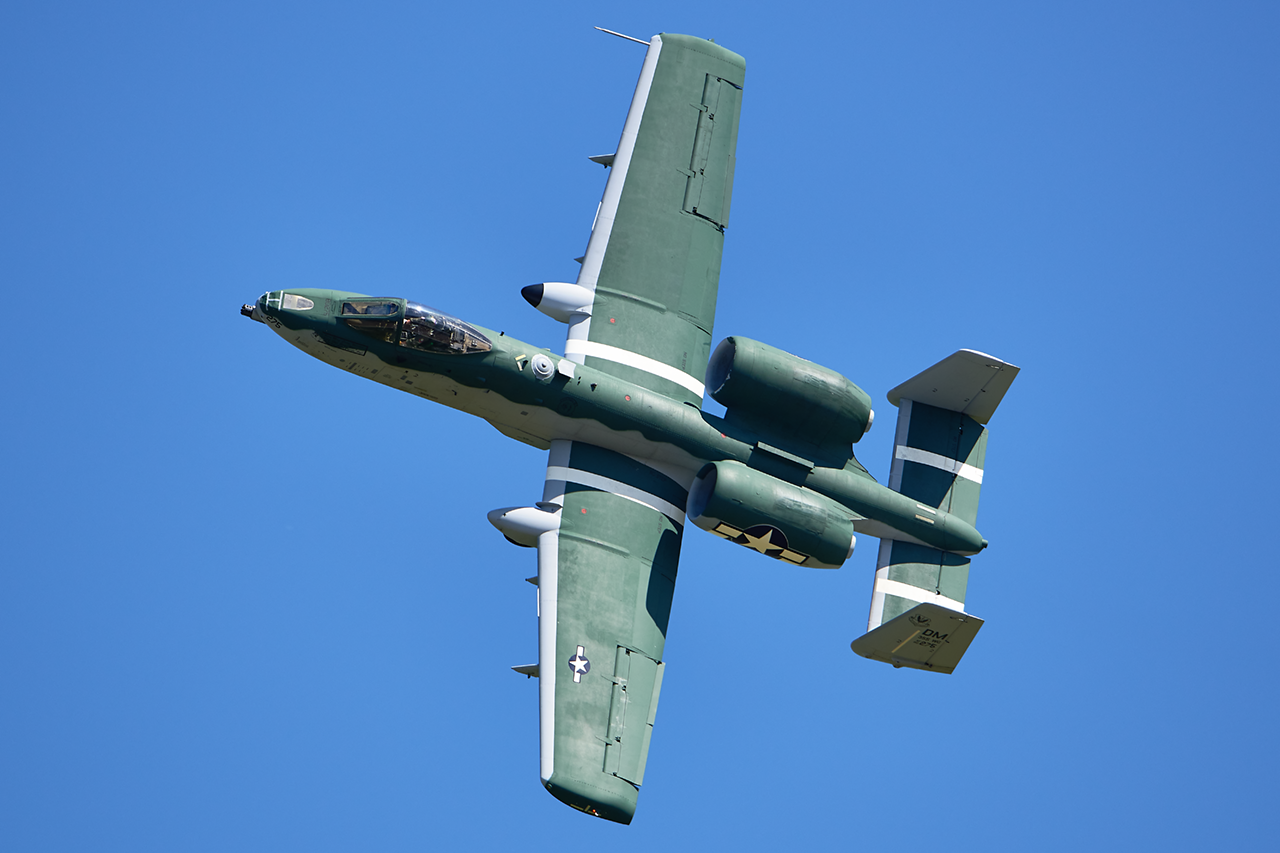
On September 12th and 13th, 2020, the team at Airshow London accomplished the (almost) impossible. Facing the most uncertain, challenging set of circumstances imaginable, with an extensive list of restrictions to overcome, Airshow London presented Skydrive, Canada’s first socially responsible and physically distant air show. After announcing the cancellation of their traditional style show on June 30th, the team at Airshow London pivoted to take advantage of a forced opportunity and produced a world class flying display using a drive-in style format. Cancellations by events in Kentucky, Maryland and Washington provided Skydrive with the unprecedented situation of being the only air show in North America that weekend. The United States Air Force (USAF) generously participated with multiple displays and individual flybys, including all five Air Combat Command (ACC) demonstration teams. In a normal year, Skydrive would have easily topped the list as one of the best air shows in North America. While certain aspects were only possible because of the situation created by the pandemic, huge congratulations and praise must be directed towards the organizers as they produced the year’s best aviation event in North America and possibly the world.
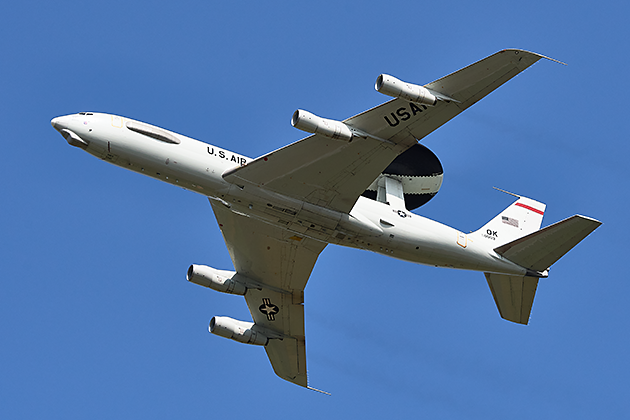
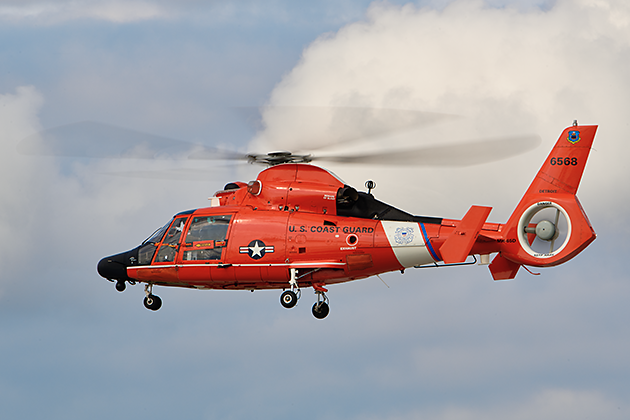
The list of limitations was formidable as the organizers had to overcome, among others, federal regulations regarding quarantine, provincial regulations regarding the number of people allowed to attend an outdoor organized public event and municipal by-laws regarding face coverings and social distancing. Although an exemption should have been available to American military crews, this option was not extended to all team members and therefore only a small group of necessary personnel, such as the safety observers, were allowed to remain in London while the aircraft were flown from Selfridge Air National Guard Base in Michigan each day. The City of London, always excited by the modern military jets that have become synonymous with the shows over the years, responded favourably by selling out more than 2000 parking spaces in the days leading up to the event. Vehicles were directed to individually marked 20 x 25 foot parking spaces on the airport taxiways, providing plenty of room for lawn chairs and coolers to aid in the enjoyment of the flying program.
Rain did fall, but it came overnight on Saturday and cleared by late morning on Sunday.
S. Clish
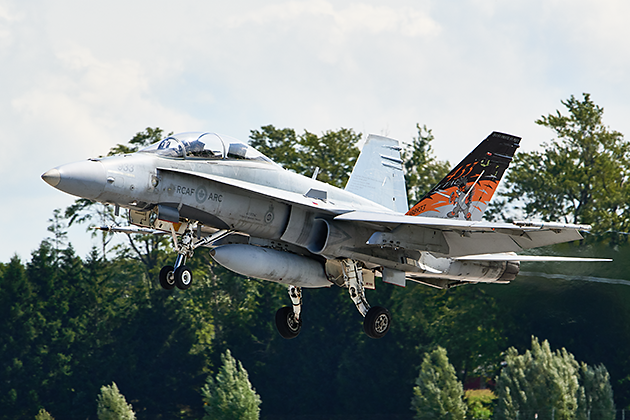
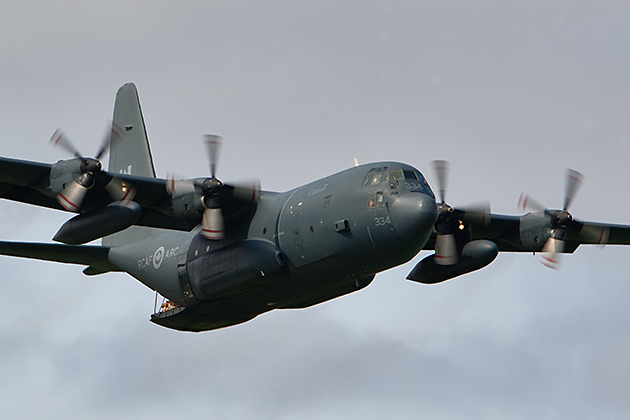
When the weather is favourable London International Airport (CYXU) is one of the best venues for aviation photography. During the second weekend in September, the sun is never higher than 48 degrees above the horizon and by 1300 when the flying commenced it is already more than 40 degrees past the centreline of Runway 15/33 and continuously improving. The conditions were quite favourable as Friday’s practice session provided a clear blue sky ahead of what was a questionable weekend forecast. Rain did fall, but it came overnight on Saturday and cleared by late morning on Sunday. Other than some clouds during the Raptor demonstration on Saturday and while the Thunderbirds performed on Sunday, the skies remained mostly clear, rewarding spectators with beautiful picture taking opportunities.
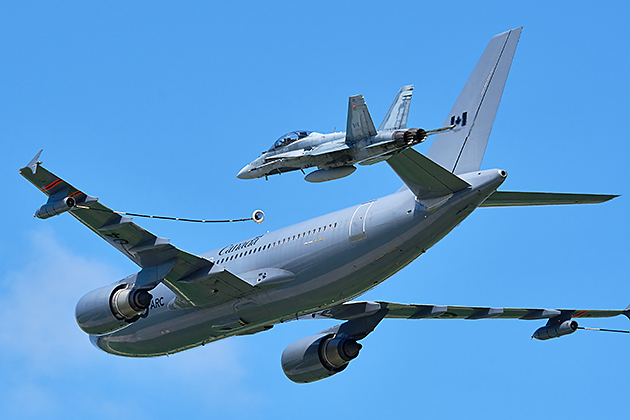
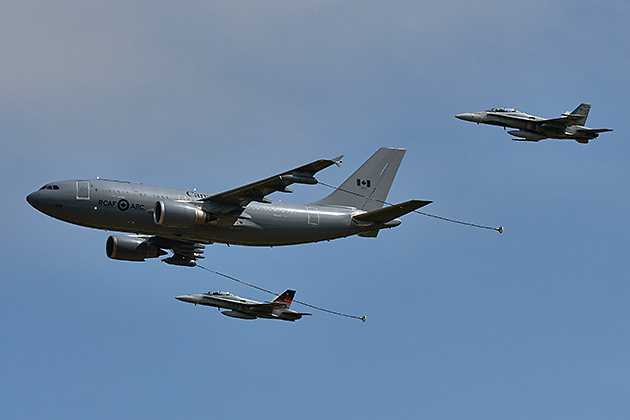
The opening act each day was a simulated refuelling demo from the RCAF featuring an Airbus CC-150T Polaris from 437 Husky Squadron and two McDonnell Douglas CF-188B Hornets from 433 Porcupine Squadron. The CF-18 Demo Team was initially scheduled to perform at Airshow London, but when the air force announced the cancellation of the team’s season on June 3rd, followed by a further announcement that the RCAF was suspending all support to air shows and other special events, it was unknown if there would be any Canadian participation over London. Luckily, the three aircraft were able to combine for a rare display that ended up being my favourite of the weekend. Three formation passes with refuelling hoses extended were followed by multiple passes from the fighters in both single and two-ship configurations. While the Polaris flew from Canadian Forces Base Trenton, the Hornets were the only aircraft to be based at London over the weekend.
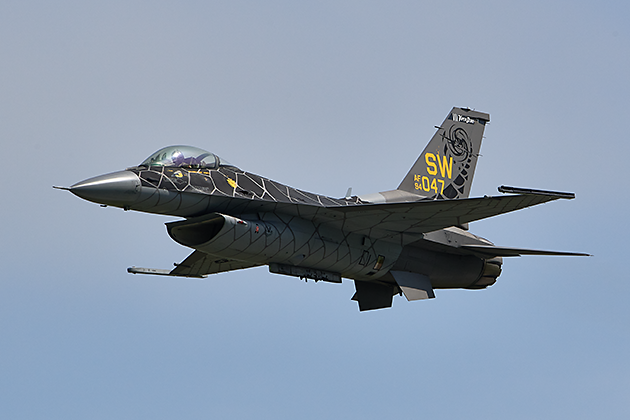
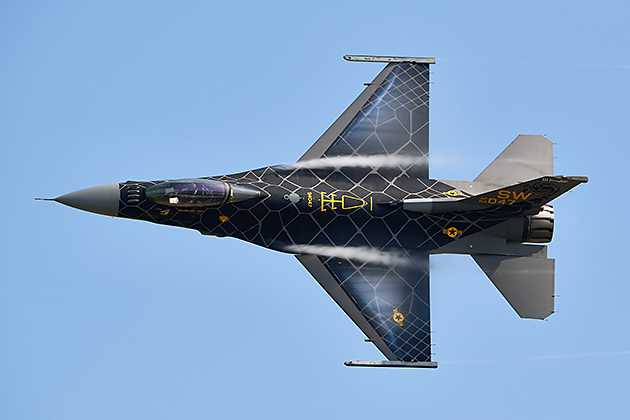
The most remarkable aspect of the program was the appearance of all four ACC single-ship demonstration teams. In a typical year, the only time these teams are together is during their Heritage Flight Training and Certification Course in March, as the teams practise flying with civilian pilots in their warbirds over Davis Monthan Air Force Base (AFB), Arizona. Due to the irregularity of 2020 and the cancellation of most events, Skydrive was able to take advantage of the availability of all four teams, bringing them together for the first time ever.
The first to display each day was the F-16 Viper Demonstration Team (VDT) flying the Lockheed-Martin F-16CM Fighting Falcon (Block 50) and representing the 20th Fighter Wing at Shaw AFB, South Carolina. The F-16 display is based on a lot of high speed, High-G maneuvering in both horizontal and vertical phases of flight. New for the 2020 season is a special paint scheme referred to as ‘Venom’, featuring black snake scales along the top of the aircraft wings and fuselage and up the tail with low visibility grey snake scales underneath. The tail code and markings, including snake eyes below the canopy, are highlighted in the traditional yellow that has been used by the VDT for years. Many of the teams scheduled appearances were unfortunately cancelled this season as Skydrive was just the second opportunity for the VDT to perform in front of a crowd. While ‘Venom’ was unable to display on Friday and Sunday, it looked great on Saturday and is projected to remain with the team for at least three seasons
The ‘Warthog’ is the close air support champion of the USAF and the display showcases some of the combat capabilities that are unique to this aircraft
Shawn Clish
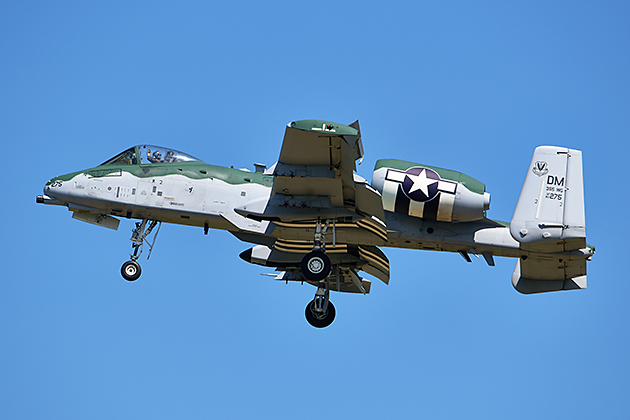
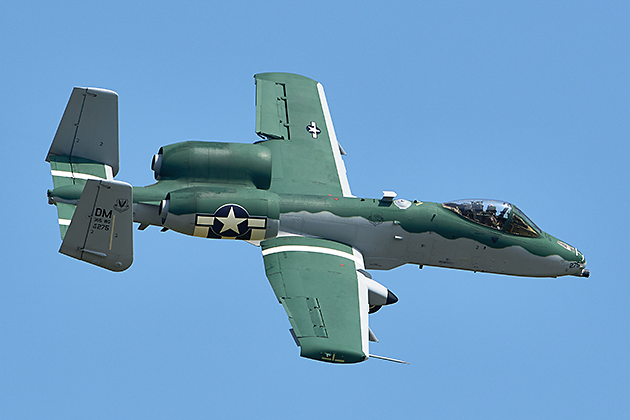
Next up was the A-10C Thunderbolt II Demonstration Team out of Davis Monthan making their second straight appearance at London. The ‘Warthog’ is the close air support champion of the USAF and the display showcases some of the combat capabilities that are unique to this aircraft. The second half of the routine is highlighted by a Pop-Up Strafe Pass and two Low Angle Strafe Passes, simulating actual combat maneuvering that would align the plane’s GAU-8 Avenger gun with enemy tanks and armoured vehicles. The A-10 was also wearing a special scheme, featuring green paint on the upper fuselage, engines, wings and horizontal stabilizers, while D-Day invasion stripes were applied to the engines and underneath the wings. The livery pays tribute to Colonel Henry William Brown, a United States Army Air Force fighter ace who was credited with shooting down fourteen aircraft and destroying another fourteen on the ground while flying a North American P-51 Mustang in World War II. Col. Brown was the highest scoring ace of the 355th Fighter Group, the same Wing that the A-10 Demo Team belongs to.
Commanded by Captain Kristin ‘Beo’ Wolfe, the first female ACC demonstration pilot to perform at an air show, the F-35 presentation is essentially a combination of the high speed of the F-16 with the high maneuverability of the F-22
Shawn Clish
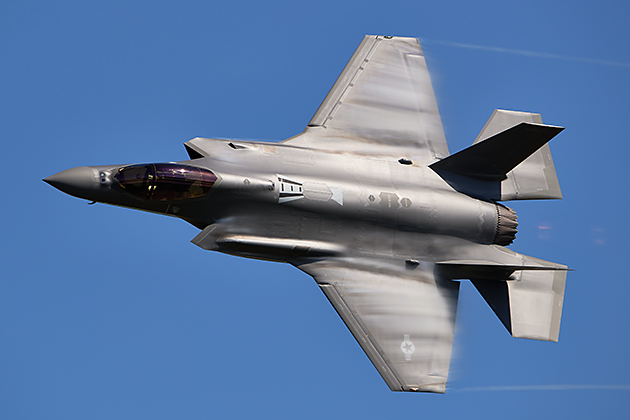
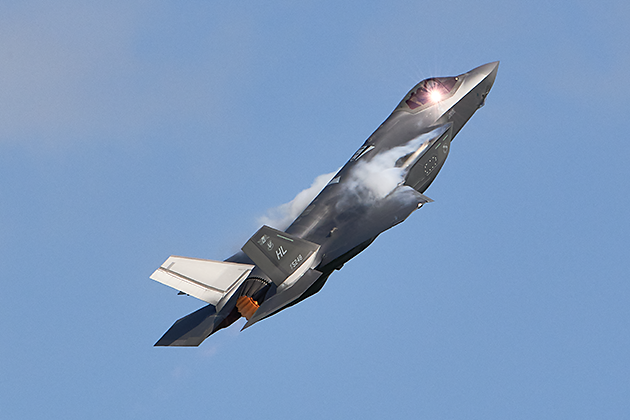
The unanimous choice for best display of the weekend belonged to the F-35A Lightning II Demonstration Team. Commanded by Captain Kristin ‘Beo’ Wolfe, the first female ACC demonstration pilot to perform at an air show, the F-35 presentation is essentially a combination of the high speed of the F-16 with the high maneuverability of the F-22. While exhibiting the USAF’s most advanced fifth generation multi-role stealth fighter, ‘Beo’ seemed to squeeze every drop of moisture out of the air all weekend, producing a constant stream of vapour off the wings and fuselage. Unfortunately, due to a battery issue, her display was cut short on Saturday afternoon and she was forced to land back at Selfridge without participating in the Heritage Flight.
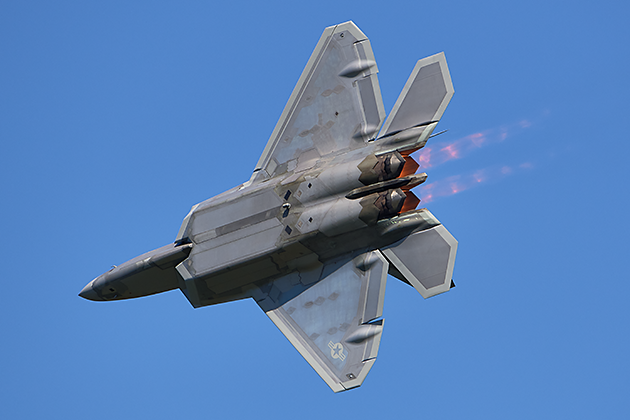
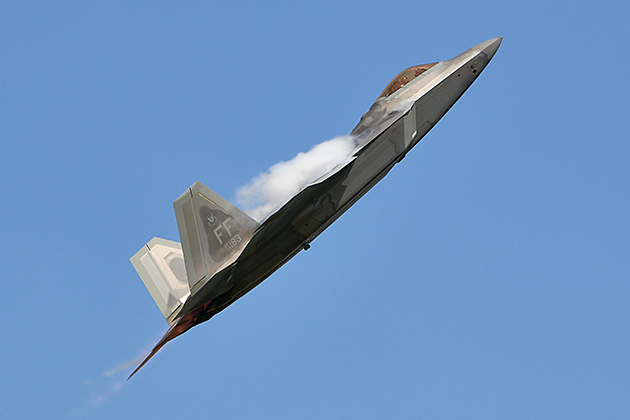
The final individual act from this group belonged to the F-22 Raptor Demonstration Team stationed at Joint Base Langley-Eustis in Hampton, Virginia. The F-22’s display highlights its exceptional agility, performing maneuvers that are distinct to the Raptor like the Pedal Turn, Power Loop and Tail Slide. These movements are possible thanks to the aircraft’s thrust vectoring nozzles and huge horizontal stabilators, and while the practicality of such slow speed handling capabilities have been debated since the first Sukhoi Su-27 ‘Cobra Maneuver’ at the Paris Air Show in 1989, they are only part of the package that combines to make the F-22 the world’s premier fifth generation air superiority aircraft.
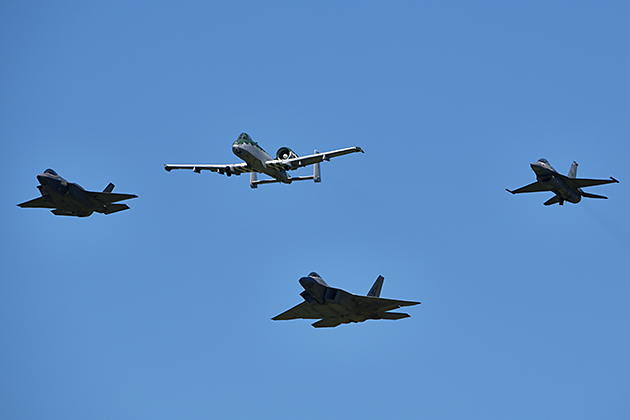
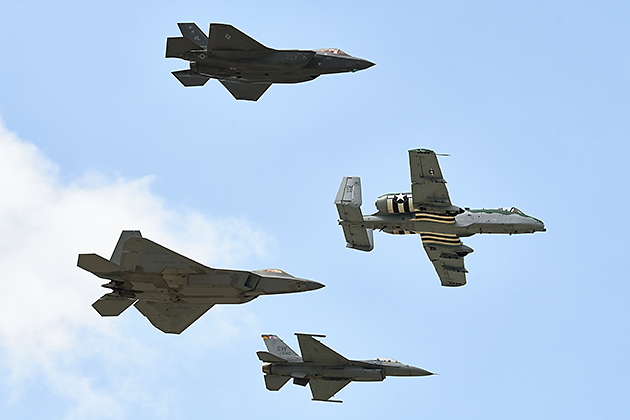
Created in 1997 to celebrate the 50th anniversary of the USAF, the Heritage Flight typically combines at least one ACC Demonstration Team with at least one warbird from World War II, the Vietnam War and/or the Korean War. The formation features five (formerly three) passes to the now iconic song ‘We Remember’ by Dwayne O’Brian and is meant as a tribute to the men and women who have served, or are currently serving, in the USAF. Since the traditional warbird was absent from this year’s lineup, all 15 passes over three days were led by the A-10, the oldest of the four aircraft and coincidentally the one wearing a P-51 Mustang inspired paint scheme. The historic diamond formation passes were followed by individual runs down the crowd line from each of the four aircraft, providing an exclamation point to a very entertaining display.
The team from McChord AFB, Washington put on a spirited display demonstrating what their ‘Moose’ is capable of
Shawn Clish
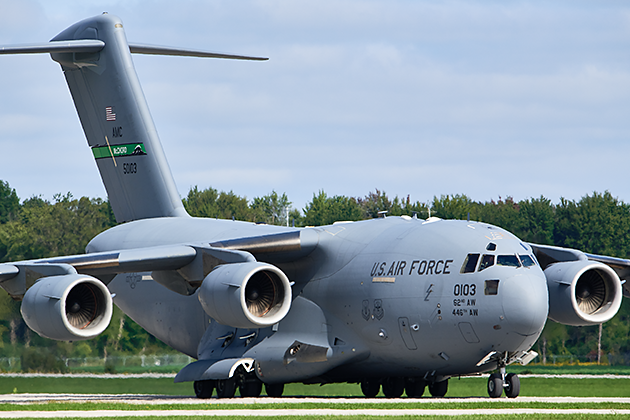
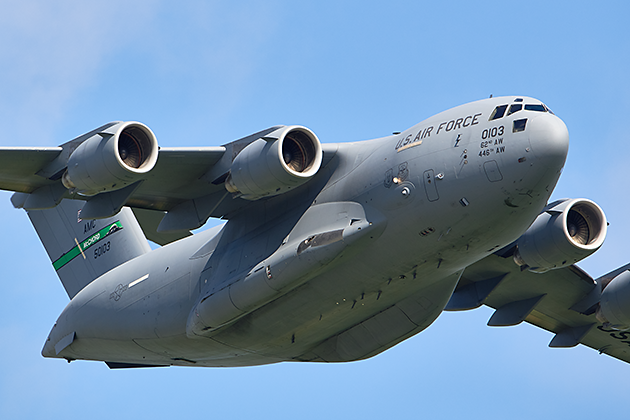
The C-17 West Coast Demo Team did a great job showing off their Boeing C-17 Globemaster III for the crowd, including multiple takeoffs and landings, highlighting the plane’s ability to operate from small airfields thanks to design features like high-lift wings, leading edge slats and externally blown flaps. The team from McChord AFB, Washington put on a spirited display demonstrating what their ‘Moose’ is capable of, but they were also a pivotal part of the work done behind the scenes, including shuttling essential members to and from London, and deserve a ton of thanks and recognition for their contributions.
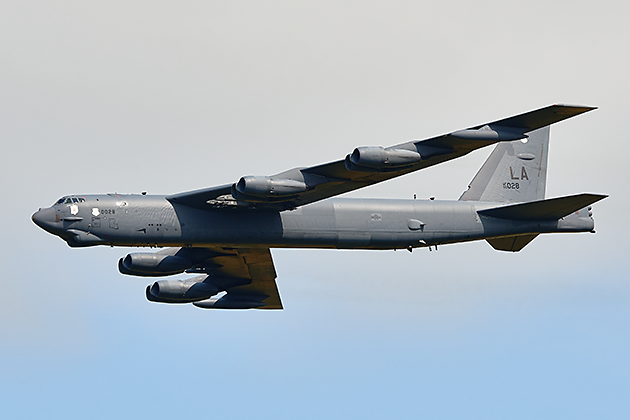
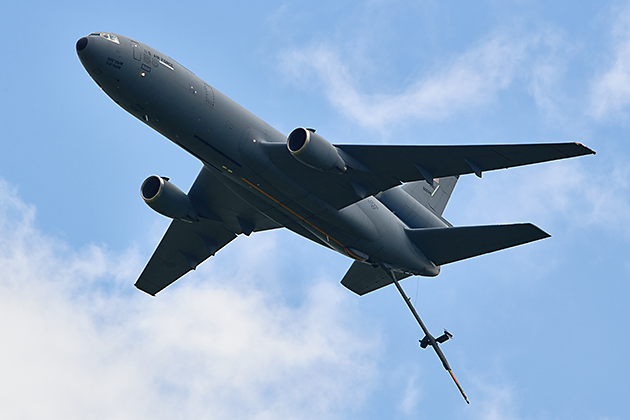
The Boeing B-52H Stratofortress was on display once again this year, this time from the Red Devils of the 96th Bomb Squadron. The 60 year old bomber was flown all the way from Barksdale Air Force Base (AFB) in Louisiana each day to perform three passes for the crowd. The sight and sound of the Cold War warrior is always a pleasure to see and hear, especially ahead of the proposed re-engining that will probably remove the dirty exhausts and high pitched howl that are staples of the B-52. Other flybys were conducted by a McDonnell Douglas KC-10A Extender from McGuire AFB, New Jersey and a Boeing E-3B Sentry from Tinker AFB, Oklahoma. It was interesting to listen to the E-3 fly past and compare it’s sound to the B-52 as both aircraft have similar Pratt and Whitney TF33 engines. As for the KC-10, it was nice to see since the type is currently being retired from service and flown to the desert for storage, being replaced by the new Boeing KC-46 Pegasus. Sunday afternoon also featured small displays by search and rescue units from both the United States and Canada. The United States Coast Guard from Detroit performed a simulated rescue in front of the crowd using a Eurocopter MH-65D Dolphin followed by two passes by an RCAF Lockheed CC-130H Hercules belonging to 424 Tiger Squadron. The CC-130H is also being phased out as the RCAF has begun receiving Airbus CC-295 aircraft for the search and rescue mission.
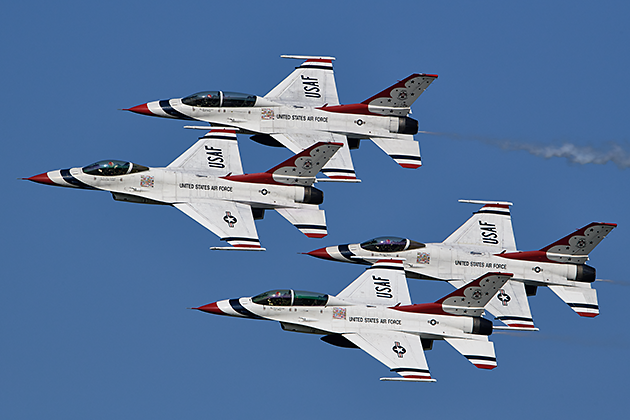
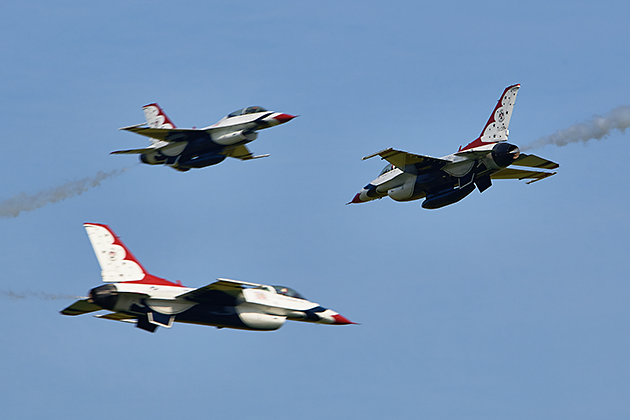
The show was closed both days by the USAF Air Demonstration Squadron, The Thunderbirds. The Thunderbirds overcame multiple hurdles to display at Skydrive. Friday’s show only included five aircraft and two of them were two-seat D models, both equipped with a travel pod on their centreline rack. Their routine was also forced to end early after the leader, Thunderbird One, suffered a bird strike half way through the show. The performances on Saturday and Sunday included six aircraft, while still using both two-seat D models, but the shows were shortened to 30 minutes due to the distance between Selfridge and London, and while Saturday’s skies permitted a high show, the overcast conditions on Sunday necessitated a low show. Even with all the obstacles, the performance was a fantastic display of pride, precision and professionalism, highlighting the skills and training indicative of the USAF.
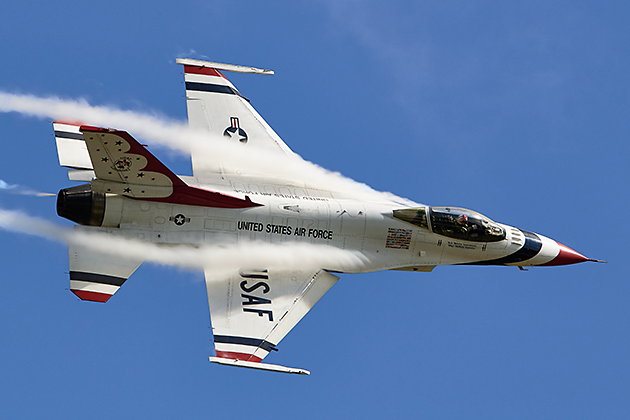
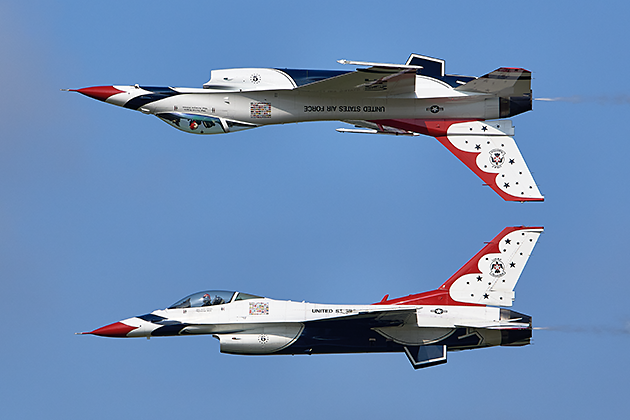
Although it was great for all of the American teams to come north and display at Canada’s only air show, the 431 Air Demonstration Squadron Snowbirds were greatly missed. The team’s 50th anniversary season was tragically shut down before it even began after an accident on May 17th in Kamloops took the life of Public Affairs Officer, Captain Jennifer Casey. Capt. Casey was very familiar to many in the air show community, having spent the 2018 season with the CF-18 Demo Team and the 2019 season with the Snowbirds. As a tribute to her, all five ACC demonstration teams wore decals featuring the Snowbirds logo on a black ribbon, with the Thunderbirds also dedicating their performances in her honour.
Finally, although there wasn’t a fly past by a KC-135, the 121st Air Refuelling Wing played a pivotal role at Skydrive, refuelling all four ACC single-ship teams to allow them to complete their entire routine and be able to perform the Heritage Flight.
Skydrive presented by Airshow London was a huge success in a year that hasn’t had a lot of highlights. The tickets sold out. The weather cooperated. The Air Boss kept the demonstrations flowing even though she was coordinating acts operating out of another country. The organizers found answers to all of the challenges they faced, making every effort to keep the participants and spectators safe while complying with the long list of government restrictions. Yet as enjoyable as this event was, hopefully next year on August 28-29, when the United States Navy Blue Angels visit with their new Super Hornets and Super Hercules, Airshow London will be able to return as a traditional style show.
Special thanks to Tori-Lyn Hill from Media & Public Relations and Gerry Vanderhoek and Mike Lewis of the Air Ops Team
Shawn Clish / CHK6

